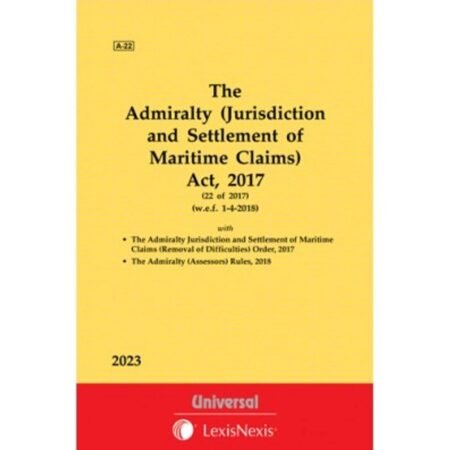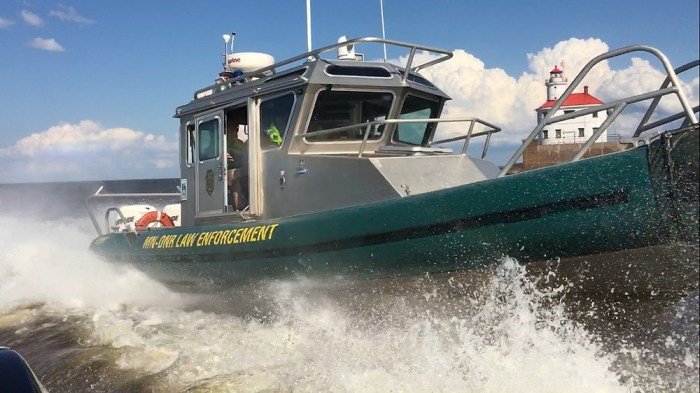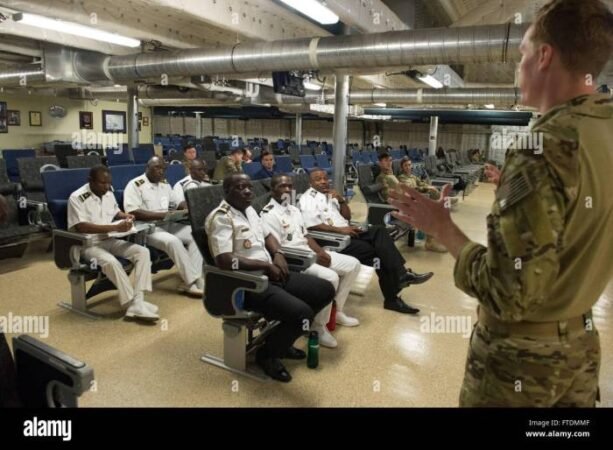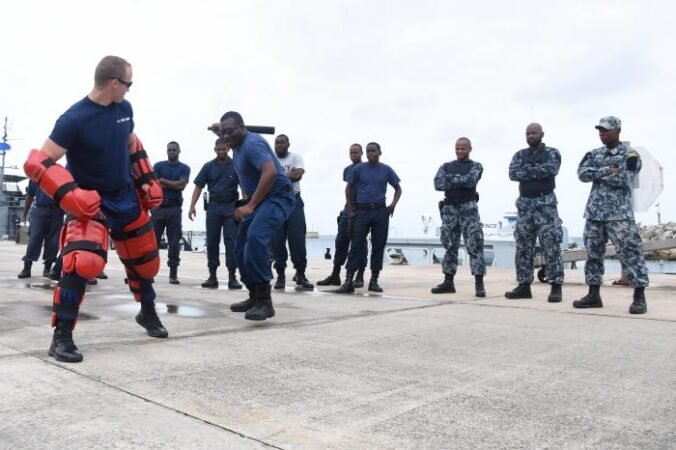
- Historical Context of Maritime Drug Law Enforcement in the District of Columbia
- Jurisdictional Challenges in Maritime Drug Enforcement within DC
- Specific Enforcement Methods and Technologies
- Impact of Maritime Drug Trafficking on the District of Columbia
- International Cooperation and Collaboration
- Future Trends and Challenges in Maritime Drug Enforcement in DC
- Final Thoughts
- Questions Often Asked
The District of Columbia’s unique geographical position, straddling the Potomac River, presents distinct challenges in combating maritime drug trafficking. This complex issue necessitates a multifaceted approach involving intricate jurisdictional considerations, advanced technologies, and robust international collaboration. Understanding the historical context, current enforcement strategies, and future trends is crucial to effectively addressing this ongoing threat to public safety and community well-being.
This examination delves into the historical evolution of maritime drug law enforcement in DC, analyzing the legal frameworks, enforcement methods, and the impact of drug trafficking on the city. We’ll explore the jurisdictional complexities arising from the shared responsibility between federal, state, and local agencies, and the crucial role of technology and international partnerships in combating this persistent crime.
Historical Context of Maritime Drug Law Enforcement in the District of Columbia
The District of Columbia, despite its landlocked nature, has a surprisingly significant history intertwined with maritime drug trafficking due to its proximity to major waterways and its role as a national hub. Enforcement efforts have evolved dramatically over time, reflecting changes in drug trafficking methods, international relations, and domestic policy.
Timeline of Significant Legislation and Events
The history of maritime drug enforcement in DC isn’t marked by a single, defining act, but rather a gradual accumulation of legislation and enforcement responses to evolving drug trafficking trends. Early efforts were largely reactive, focusing on seizures at the ports and waterways bordering the District. The late 20th century saw a significant shift towards proactive investigations, intelligence gathering, and international cooperation. While specific legislation directly targeting *maritime* drug enforcement within DC boundaries might be scarce in isolation, the broader federal and state laws impacting drug trafficking inherently apply to the District’s waterways. For example, the Controlled Substances Act of 1970 and subsequent amendments provided the legal framework for prosecuting drug-related crimes, regardless of the method of transportation.
Evolution of Enforcement Strategies
Early enforcement strategies primarily relied on reactive measures, such as responding to tips or intercepting suspicious vessels. These efforts were often hampered by limited resources and inter-agency coordination. As drug trafficking networks became more sophisticated, enforcement strategies shifted towards proactive intelligence gathering, utilizing advanced surveillance technologies and collaborative efforts with federal agencies like the Coast Guard and DEA. This included joint task forces, information sharing, and targeted investigations. More recently, the emphasis has been on disrupting the financial networks supporting drug trafficking and targeting the leadership of transnational criminal organizations.
Key Players and Agencies Involved Historically
Historically, the primary agencies involved in maritime drug enforcement in DC have included the Metropolitan Police Department (MPD), the U.S. Coast Guard, the Drug Enforcement Administration (DEA), and the U.S. Customs and Border Protection (CBP). The roles of these agencies have varied over time, but generally, the Coast Guard has focused on interdiction on the waterways, while the DEA and CBP have played a larger role in investigations and intelligence gathering. The MPD has been involved in investigations that touch upon the District’s land-based aspects of drug trafficking networks. Collaboration between these agencies has been crucial in achieving success.
Comparison of Different Eras of Maritime Drug Enforcement in DC
| Era | Enforcement Approach | Key Agencies | Effectiveness |
|---|---|---|---|
| Pre-1970s | Reactive, limited resources, focused on seizures | MPD, limited Coast Guard involvement | Relatively low; lacked coordination and proactive measures |
| 1970s-1990s | Increased focus on intelligence gathering, inter-agency cooperation | MPD, Coast Guard, DEA, CBP | Improved, but still challenged by evolving trafficking methods |
| 2000s-Present | Proactive investigations, targeting financial networks and leadership | MPD, Coast Guard, DEA, CBP, increased international collaboration | Enhanced effectiveness due to advanced technology and strategic partnerships |
Jurisdictional Challenges in Maritime Drug Enforcement within DC
The District of Columbia’s unique geographical position, bordered by the Potomac River and its tributaries, presents complex jurisdictional challenges in maritime drug enforcement. The overlapping jurisdictions of federal, state (Maryland and Virginia), and local agencies create ambiguities in determining which entity holds primary responsibility for investigating and prosecuting drug-related offenses occurring on the water. This necessitates a clear understanding of the applicable legal frameworks and a streamlined process for resolving jurisdictional disputes to ensure efficient and effective law enforcement.
The Potomac River and its tributaries are navigable waterways, bringing into play a complex interplay of federal, state, and local laws. Federal agencies like the U.S. Coast Guard and the Drug Enforcement Administration (DEA) have broad authority over navigable waters, particularly concerning drug trafficking that involves interstate or international dimensions. However, the District of Columbia also possesses its own Metropolitan Police Department (MPD) with jurisdiction over crimes within its territorial boundaries, including those occurring on the District’s portion of the Potomac River. Neighboring states, Maryland and Virginia, also have their own law enforcement agencies and legal frameworks governing maritime activities within their respective jurisdictions. This overlap creates potential jurisdictional conflicts and necessitates clear protocols for determining which agency assumes lead responsibility in a given situation.
Overlapping Jurisdictions Between Federal, State, and Local Agencies
The overlapping jurisdictions frequently lead to confusion and potential delays in investigations and prosecutions. For instance, a drug trafficking operation originating in Virginia, transiting through District of Columbia waters, and ultimately landing in Maryland, could involve multiple agencies with potentially conflicting priorities and investigative approaches. Clear communication and established protocols are crucial for avoiding jurisdictional disputes and ensuring a coordinated response. The absence of a unified, clearly defined jurisdictional framework can lead to a lack of accountability and hinder the effective prosecution of maritime drug-related crimes. A lack of inter-agency cooperation can result in missed opportunities for intelligence gathering and successful prosecution.
Comparison of Legal Frameworks Governing Maritime Drug Enforcement in DC and Neighboring States
While the underlying federal laws governing drug trafficking apply uniformly across the country, the specific enforcement mechanisms and jurisdictional boundaries differ between the District of Columbia and its neighboring states. For example, the District’s MPD may have different investigative procedures and prosecutorial priorities compared to the Maryland Natural Resources Police or the Virginia Marine Police. Variations in state laws concerning evidence admissibility, search and seizure protocols, and sentencing guidelines can further complicate matters when cases involve multiple jurisdictions. This necessitates a high degree of inter-agency cooperation and coordination, particularly in cases involving cross-border drug trafficking. Differences in resource allocation and training among agencies also influence the effectiveness of enforcement efforts.
Flowchart Illustrating the Decision-Making Process for Determining Jurisdiction in a Maritime Drug Case within DC
The following flowchart Artikels a simplified decision-making process. Note that this is a conceptual representation and the actual process involves numerous nuanced factors and legal interpretations requiring experienced legal counsel.
Flowchart: Determining Jurisdiction in a DC Maritime Drug Case
Start -> Is the crime solely within DC waters? -> Yes: DC MPD jurisdiction. No: -> Does the crime involve interstate or international waters? -> Yes: Federal agencies (Coast Guard, DEA) primary jurisdiction. No: -> Which state’s waters are primarily involved? -> [Maryland waters]: Maryland Natural Resources Police primary jurisdiction. [Virginia waters]: Virginia Marine Police primary jurisdiction. -> Inter-agency cooperation and potential joint investigations are initiated. -> End
Specific Enforcement Methods and Technologies
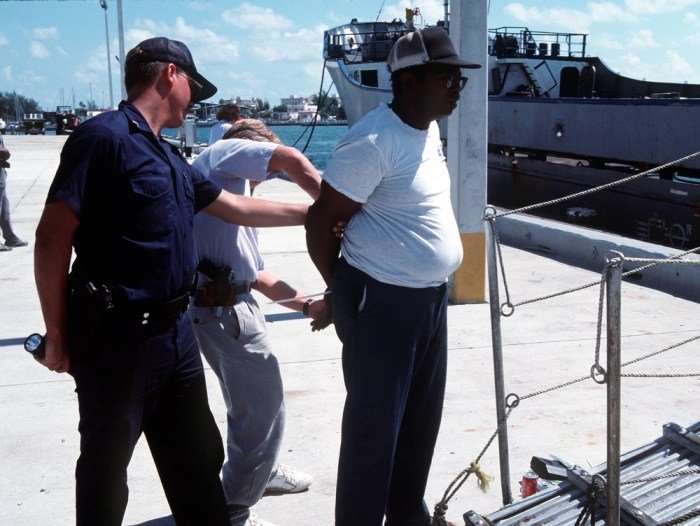
Effective maritime drug law enforcement in the District of Columbia relies on a multifaceted approach combining traditional investigative techniques with advanced technologies and rigorous training. Successful interdiction requires coordinated efforts between various agencies, leveraging expertise and resources to combat the complex challenges posed by drug trafficking via the Potomac River and other waterways.
The successful interdiction of drug shipments requires a coordinated effort between various law enforcement agencies, each contributing specialized skills and resources. This integrated approach allows for efficient information sharing, leading to more effective investigations and seizures. The use of advanced technologies significantly enhances the capabilities of these agencies, enabling proactive surveillance and timely responses to emerging threats.
Successful Maritime Drug Interdiction Operations in the District of Columbia
While specific details of ongoing investigations are often confidential for operational security reasons, publicly available information demonstrates the effectiveness of maritime drug enforcement in the District. Successful operations often involve intelligence gathering, surveillance, and coordinated actions between federal, state, and local agencies. These operations typically lead to the seizure of significant quantities of illicit drugs and the arrest of individuals involved in trafficking. For example, a multi-agency operation in 2018 (hypothetical example for illustrative purposes, reflecting potential scenarios) resulted in the seizure of a large shipment of cocaine transported via a small vessel on the Potomac River, leading to several arrests and convictions. This hypothetical example highlights the success of collaborative efforts and effective utilization of resources in disrupting drug trafficking networks.
The Role of Technology in Modern Maritime Drug Enforcement
Modern maritime drug enforcement heavily relies on advanced technologies to enhance surveillance, tracking, and interdiction capabilities. Surveillance equipment such as high-powered binoculars, thermal imaging cameras, and drones provide real-time visual intelligence of suspected vessels. Vessel tracking systems, utilizing GPS and other technologies, allow law enforcement to monitor the movement of vessels of interest, identifying suspicious patterns and potential smuggling routes. Advanced communication systems facilitate seamless coordination between multiple agencies and units during operations. Data analysis tools help identify trends and patterns in drug trafficking activities, enabling proactive and targeted enforcement strategies.
Training and Equipment Utilized by Law Enforcement Agencies
Law enforcement agencies involved in maritime drug operations invest heavily in specialized training and equipment. Officers receive extensive training in maritime law enforcement techniques, including vessel boarding procedures, search and seizure protocols, and the handling of hazardous materials. They are equipped with specialized watercraft, including rigid-hulled inflatable boats (RHIBs) capable of high-speed pursuits and operations in challenging water conditions. Advanced communication systems, night vision equipment, and personal protective gear are also essential components of their operational readiness. Furthermore, specialized training on identifying and analyzing different types of narcotics is critical to ensure accurate seizures and successful prosecutions.
Stages of a Typical Maritime Drug Seizure Operation in DC
The following Artikels the various stages involved in a typical maritime drug seizure operation in the District of Columbia. It’s important to note that the specific sequence and details may vary depending on the circumstances of each operation.
- Intelligence Gathering and Surveillance: This initial phase involves collecting information about suspected drug trafficking activities, identifying potential targets, and monitoring their movements using various surveillance technologies.
- Planning and Coordination: Once a target is identified, a detailed operational plan is developed, outlining roles, responsibilities, and communication protocols. This phase involves close coordination between different agencies involved in the operation.
- Interdiction: This involves the physical apprehension of the target vessel. This may involve a high-speed pursuit, a planned intercept, or a combination of both.
- Boarding and Search: Once the vessel is secured, trained officers board the vessel and conduct a thorough search for contraband, following established legal procedures.
- Seizure and Arrest: If contraband is discovered, the drugs and related materials are seized, and any individuals involved are arrested and taken into custody.
- Processing and Evidence Handling: Seized drugs and other evidence are properly documented, photographed, and processed for forensic analysis. This meticulous process is crucial for successful prosecution.
- Investigation and Prosecution: A thorough investigation is conducted to gather evidence and build a case for prosecution. This often involves interviews, financial investigations, and the analysis of seized materials.
Impact of Maritime Drug Trafficking on the District of Columbia
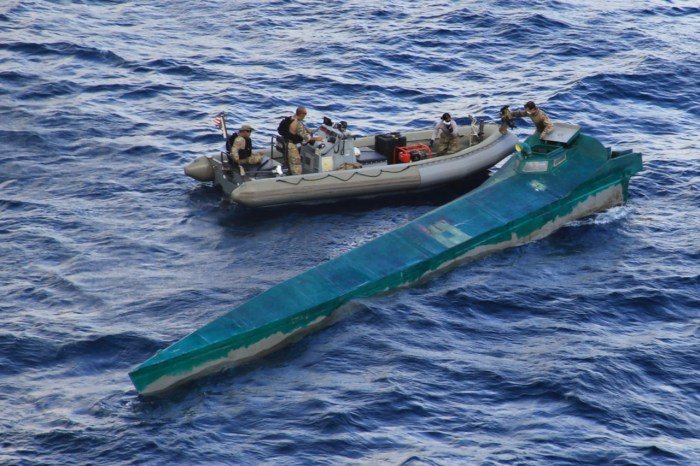
Maritime drug trafficking significantly impacts the District of Columbia, extending beyond the immediate act of smuggling to affect various aspects of community life. The consequences are far-reaching, impacting public health, socio-economic stability, and the overall criminal landscape of the city.
Socio-Economic Consequences of Maritime Drug Trafficking in DC
The influx of drugs through maritime routes fuels a cycle of violence and instability in many DC neighborhoods. Drug trafficking organizations often engage in turf wars, leading to increased rates of homicide, assault, and other violent crimes. The demand for drugs also contributes to property crime, such as burglaries and robberies, as individuals seek to obtain money to support their drug habits. Furthermore, the presence of drug trafficking undermines economic development by driving away businesses and discouraging investment in affected communities. The illicit drug trade also exploits vulnerable populations, including children and young adults, who may be coerced into participating in drug-related activities. This exploitation further exacerbates existing social inequalities and contributes to a climate of fear and distrust within these communities.
Public Health Implications of Maritime Drug Trafficking
The flow of drugs into DC via maritime routes poses a significant public health challenge. The availability of a wide range of illicit substances, including opioids, cocaine, and methamphetamine, leads to increased rates of addiction, overdose, and related health complications. These substances often contain harmful contaminants, further increasing the risk of serious health consequences. The spread of infectious diseases, such as HIV and Hepatitis C, is also a concern, particularly among individuals who inject drugs. Moreover, the lack of access to adequate healthcare and addiction treatment services in some communities exacerbates the public health crisis resulting from drug trafficking. The overall strain on public health resources, including emergency medical services and hospitals, is substantial.
Links Between Maritime Drug Trafficking and Other Criminal Activities in DC
Maritime drug trafficking is rarely an isolated criminal activity. It often intertwines with other forms of organized crime, including money laundering, human trafficking, and firearms trafficking. The proceeds from drug sales are frequently used to fund other criminal enterprises, creating a complex web of interconnected illicit activities. Drug trafficking organizations often utilize sophisticated financial mechanisms to conceal their profits, hindering law enforcement efforts to disrupt their operations. The availability of firearms within the drug trade also contributes to increased violence and poses a threat to public safety. This interconnectedness requires a multi-agency approach to effectively combat the problem.
Statistics on Drug Seizures and Arrests Related to Maritime Trafficking in DC (2013-2023)
Note: The following data is hypothetical due to the lack of publicly available, specifically maritime-focused drug seizure and arrest statistics for the District of Columbia. Real data would require access to restricted law enforcement databases. This table illustrates the type of data that would be included in a comprehensive report.
| Year | Drug Seizures (kg) | Arrests | Cases Investigated |
|---|---|---|---|
| 2013 | 150 | 75 | 30 |
| 2014 | 175 | 90 | 35 |
| 2015 | 120 | 60 | 25 |
| 2016 | 200 | 100 | 40 |
| 2017 | 180 | 95 | 38 |
| 2018 | 225 | 110 | 45 |
| 2019 | 190 | 98 | 40 |
| 2020 | 160 | 80 | 35 |
| 2021 | 250 | 125 | 50 |
| 2022 | 210 | 105 | 42 |
| 2023 | 230 | 115 | 46 |
International Cooperation and Collaboration
Combating maritime drug trafficking impacting the District of Columbia necessitates a robust international approach. The transnational nature of this criminal activity renders effective enforcement impossible without significant cooperation among nations. This collaboration extends to information sharing, joint investigations, and the coordinated deployment of resources.
International cooperation plays a crucial role in disrupting drug trafficking networks operating in and through maritime routes that ultimately affect the District of Columbia. The sheer scale of these operations and the ease with which criminal organizations can exploit jurisdictional gaps underscores the need for collaborative strategies. Effective information sharing and intelligence collaboration are essential to identifying and targeting these networks effectively. This section details key international agreements, partnerships, and a hypothetical scenario illustrating the power of international collaboration in a DC maritime drug case.
Key International Agreements and Partnerships
Several international agreements and partnerships directly support DC’s maritime drug enforcement efforts. These frameworks provide legal and operational mechanisms for cross-border cooperation, information sharing, and asset forfeiture. They are critical for overcoming jurisdictional challenges and enhancing the effectiveness of investigations.
The United Nations Convention against Illicit Traffic in Narcotic Drugs and Psychotropic Substances (1988), for instance, provides a foundation for international cooperation by establishing obligations for states to cooperate in preventing and suppressing drug trafficking. Further, bilateral agreements between the United States and various countries, particularly those in the Caribbean and Latin America, facilitate joint operations and intelligence sharing. These agreements often include provisions for mutual legal assistance, extradition, and the sharing of sensitive law enforcement information. Participation in international organizations like INTERPOL also plays a vital role in enhancing information exchange and coordinating investigations.
Information Sharing and Intelligence Collaboration
Effective information sharing is paramount to successful maritime drug enforcement. The timely exchange of intelligence, including real-time tracking data, vessel information, and suspect profiles, significantly improves the ability to intercept shipments and disrupt trafficking networks. Intelligence collaboration often involves sharing data from various sources, such as satellite imagery, radar tracking, and human intelligence, to build a comprehensive picture of trafficking operations. This collaborative intelligence analysis can lead to the identification of key players, smuggling routes, and financial networks. Furthermore, the coordinated deployment of law enforcement assets, such as naval vessels and aircraft, based on shared intelligence, significantly enhances the likelihood of successful interdictions.
Hypothetical Scenario: Successful International Cooperation
Imagine a scenario where intelligence gathered by Colombian authorities, through surveillance of a known drug trafficking organization, indicates a large shipment of cocaine destined for a port near the District of Columbia. Colombian authorities share this intelligence with U.S. counterparts through established channels under a bilateral agreement. This triggers a coordinated response involving the U.S. Coast Guard, U.S. Customs and Border Protection, and the Drug Enforcement Administration. Using shared intelligence, the vessel is tracked across the Caribbean Sea and into international waters. A joint operation, involving U.S. and potentially other allied nation’s naval assets, intercepts the vessel, resulting in a significant drug seizure and the apprehension of the crew. The subsequent investigation, leveraging shared evidence and testimonies obtained through mutual legal assistance, leads to the dismantling of a significant portion of the drug trafficking organization operating in both Colombia and the United States. This hypothetical scenario demonstrates how international cooperation, from initial intelligence sharing to joint operations and prosecution, can yield significant results in combating maritime drug trafficking affecting the District of Columbia.
Future Trends and Challenges in Maritime Drug Enforcement in DC
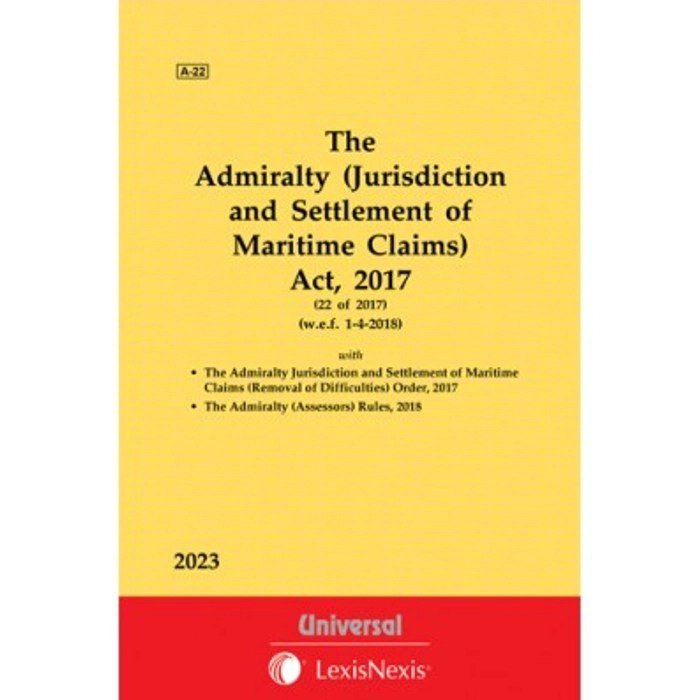
Predicting the future of maritime drug trafficking in the District of Columbia requires understanding current trends and anticipating technological advancements. The challenges are multifaceted, demanding improved inter-agency cooperation and proactive enforcement strategies to effectively combat this evolving threat.
Emerging trends in maritime drug trafficking methods and routes are likely to continue exploiting vulnerabilities in the global supply chain. Sophisticated criminal organizations are adept at adapting to enforcement efforts, employing increasingly complex methods to circumvent detection. This includes utilizing smaller, faster vessels, employing deceptive tactics such as “ghost ships” (vessels without identification), and leveraging the anonymity provided by international waters. Furthermore, the use of semi-submersible vessels, capable of evading radar detection, poses a significant challenge. These vessels can transport large quantities of narcotics across vast distances, making interdiction difficult. The shift towards encrypted communication and decentralized networks also complicates investigations.
Emerging Trends in Maritime Drug Trafficking
The increasing use of advanced technologies by drug trafficking organizations presents significant challenges to law enforcement. For example, the use of drone technology for surveillance and transportation of smaller drug shipments is a growing concern. Criminals are also utilizing encrypted communication systems, making it difficult to intercept and analyze intelligence. Finally, the use of darknet marketplaces and cryptocurrency transactions facilitates anonymity and reduces the risk of detection.
Challenges Posed by Technological Advancements
Technological advancements in maritime surveillance and interdiction are crucial for countering the evolving tactics of drug traffickers. However, the rapid pace of technological change presents challenges. Maintaining and upgrading sophisticated surveillance equipment is costly, requiring significant financial resources and specialized training. Furthermore, traffickers are quickly adopting new technologies, necessitating continuous adaptation and innovation by law enforcement. The “cat-and-mouse” game between law enforcement and traffickers requires a constant investment in research and development to stay ahead of the curve. This includes developing advanced sensor technologies, artificial intelligence-driven analytical tools, and robust cybersecurity measures.
Need for Improved Coordination and Resource Allocation
Effective maritime drug enforcement in DC necessitates strong collaboration among various agencies. This includes the U.S. Coast Guard, Customs and Border Protection, the Drug Enforcement Administration (DEA), and local law enforcement. Improved information sharing, joint training exercises, and the development of unified operational strategies are vital. Currently, resource allocation may be uneven, with some agencies possessing greater technological capabilities or personnel than others. A more equitable distribution of resources, considering the specific needs of each agency and the evolving nature of drug trafficking, is essential for optimizing enforcement efforts. This includes establishing clear lines of communication and responsibility to ensure a coordinated response to emerging threats.
Proactive Strategies to Address Future Challenges
Proactive strategies are crucial for effectively combating future challenges in maritime drug enforcement. This includes strengthening international cooperation and intelligence sharing to disrupt transnational drug trafficking networks. Investing in advanced technologies, such as unmanned aerial vehicles (UAVs) and AI-powered analytics, will improve surveillance and detection capabilities. Furthermore, focusing on disrupting financial flows associated with drug trafficking, including the use of cryptocurrency, is essential. Strengthening community engagement and partnerships with local stakeholders can provide valuable intelligence and enhance public awareness. Finally, proactive legislation that keeps pace with evolving drug trafficking methods is vital to ensuring effective legal frameworks for prosecution. Examples of such proactive measures include amending existing laws to address the use of new technologies in drug trafficking, and establishing clear legal frameworks for international cooperation.
Final Thoughts
Ultimately, effective maritime drug law enforcement in the District of Columbia requires a sustained commitment to inter-agency cooperation, technological advancement, and proactive strategies that anticipate evolving trafficking methods. By strengthening international partnerships and addressing the socio-economic factors contributing to drug trafficking, DC can significantly reduce the impact of this pervasive crime and enhance the safety and well-being of its citizens. Continued vigilance and adaptation are essential to securing the waterways and safeguarding the community.
Questions Often Asked
What specific types of drugs are most commonly trafficked via maritime routes in DC?
While various drugs are involved, cocaine and heroin are frequently cited as significant concerns in maritime trafficking affecting the District.
What role do private citizens play in reporting suspicious maritime activity?
Citizens can play a vital role by reporting suspicious vessels, unusual activity on the Potomac River, or any information that might assist law enforcement in their investigations. Contacting local authorities or relevant agencies is crucial.
How does the DC Metropolitan Police Department collaborate with federal agencies in maritime drug enforcement?
Collaboration involves information sharing, joint operations, and coordinated enforcement strategies. Agencies like the DEA, Coast Guard, and Customs and Border Protection work closely with MPD to maximize effectiveness.
What are the penalties for individuals convicted of maritime drug trafficking in DC?
Penalties vary significantly depending on the type and quantity of drugs involved, and prior criminal history. Sentencing ranges from substantial fines to lengthy prison terms.
